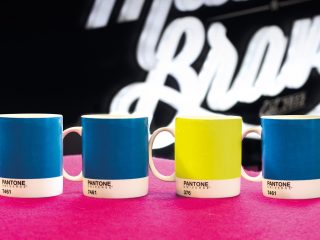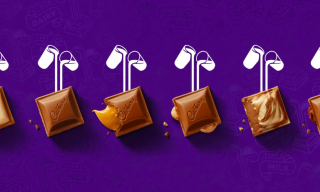Creating a consistent brand that builds trust and leads to advocacy.
Brand sentiment is probably one of the most valuable metrics that a business could get their mitts on and yet, it’s probably one of the most difficult ones to measure (handy that, isn’t it?). In a nutshell, brand sentiment sums up how people feel about your brand – whether good or bad – which in turn, helps brands to move and adjust with their audiences in mind.
Unlike click-throughs, engagement rates and sales figures, brand sentiment isn’t really something you can measure at the touch of a button. The best way to measure sentiment is to ask people what they think and if there’s brand consistency, it will make answering that question a whole lot easier.
Brand consistency is pretty much what it says on the tin – it’s how your brand communicates in a consistent and recognisable way. To communicate your brand consistently, you need to know it first, and that starts with your brand foundations and guidelines. These two buildings blocks help you to first of all, understand your brand inside out and secondly, give you and your team (whether in-house or an agency) all the tools needed to then communicate it to the world in a way that’s, you guessed it, consistent.
So, what does this have to do with sentiment?
Let’s take brands out of the picture for a second (yep, we said it) and think about how we, as individuals respond to consistency. If the last million or so years are anything to go by, us humans are creatures of habit, which means we respond pretty well to things (or other people) who reflect that.
When we were kids, we knew that when we ran downstairs on a Saturday morning, grabbed a bowl of Coco Pops and turned on the TV, we’d be met with ThunderCats, Tom and Jerry and Teenage Mutant Ninja Turtles. This happened every single Saturday which meant that we built our morning around it and tuned into that channel week after week. Now, if that channel decided to show cartoons one week and Antiques Road Show the next, we probably wouldn’t have tuned in quite the same.
Imagine that same idea in a social situation – you’ve got a friend who you regularly meet for burritos on a Thursday at 6pm (note: if anyone fancies becoming our burrito pal, let us know). Some Thursdays, they show up at 5:55pm, then others they show up at 6:47pm and sometimes, they don’t show up at all. After a while, you’d feel pretty uneasy about making plans with that person and maybe look to extend your burrito club so you have a few more people you can rely on.
This reliability is something that goes hand in hand with brand consistency because people feel more at ease when they know they’re not going to be met with any nasty surprises. Especially in unfamiliar places, we all of a sudden feel more comfortable when we see something we recognise (which is why you’ll often hear someone on holiday shouting – “Mum look! They’ve got a McDonalds here!”)
McDonalds is a prime example of a brand that has nailed consistency – you only need to catch a glimpse of those golden arches to picture a cheeseburger (extra pickles) with large fries and a strawberry milkshake in your head. Earlier this year, they created a wayfinding campaign to lead drivers to their nearest restaurant using only sections of their logo, the brand colours and a little bit of functional copy. There wasn’t a full logo or a name in sight and yet, we were already taking the next left to pick up a sharing box of nuggets that we, let’s face it, probably wouldn’t share.

So, how did McDonalds get away with such an ambiguous ad? Way back in 1952, the McDonalds brothers worked with architect Stanley Clark Meston to make the building of their fast food restaurant stand out and be seen from down the street. He decked out the predominantly red and yellow space with two large golden arches at each side of the building, but it wasn’t until 1962 that they joined those two arches to make the ‘M’ that we all know today. Apart from the fact that McDonalds is a franchise and has visibility in over 100 countries all over the world, the brand has gathered such awareness and sentiment because it still holds features that were present and have continued to be present for over 60 years. This brand consistency makes it so easy for people to give an answer on how they feel about McDonalds because, even with its evolution, the brand still resembles what it always was.
For Jack Daniels, it’s about consistently communicating their story. John Hayes, Senior Vice President, Chief Marketing Officer of Brown-Forman Brands and formerly Jack Daniel’s senior vice-president and managing director, said:
“It’s a true story about a real place in Lynchburg, Tennessee. Essentially, what we do is just tell the story about the product, how it’s made, the process that makes it a unique whiskey, the people and the place – and a lot of it is about our brand stories over the years. It’s been consistent since the mid-1950s with our first marketing campaign. It is essentially the same thing you see in London Underground campaigns that have been running for a long time.”
Not fiction, no made up characters – just exploring the factual past of the brand and using that in marketing activity. This consistent story allows people to make decisions about the brand and, hopefully, helps them to engage with it on a personal level too.
The thing with keeping a brand consistent is that it’s really challenging to do. Everything from your designer, to different cultures and the people behind your customer service team can have an effect on how consistently your brand is communicated and in turn, how that brand sentiment sways. However, with those brand foundations and guidelines in place and a constant check in with your team and of course, your audiences, building a consistent brand gets a lot easier. Over time, consistency brings awareness, that awareness brings sentiment and that sentiment brings trust.
Psst – down here! Looking to build your brand? Check out our latest work and get in touch!



